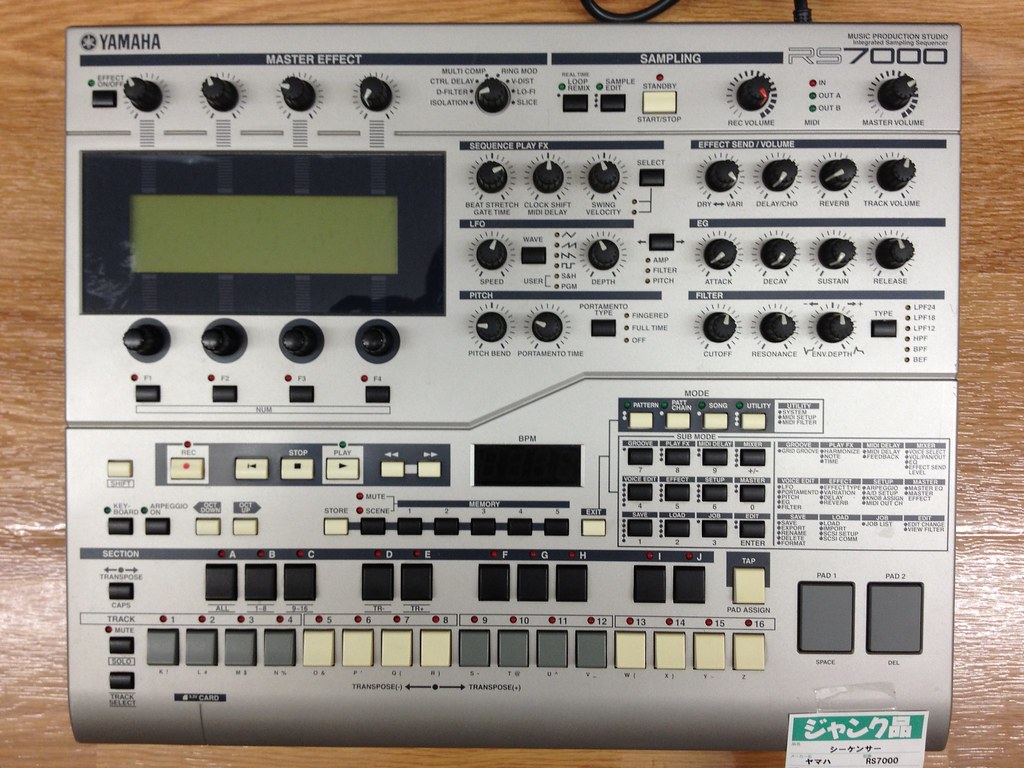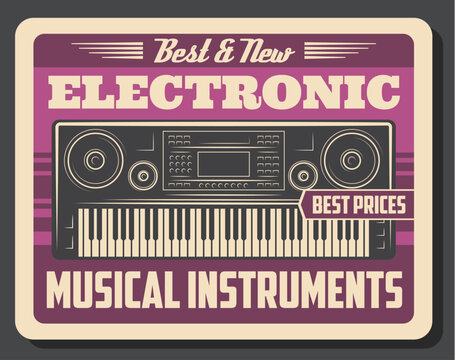Music production can be an intimidating field to jump into, with endless options for equipment, software, and techniques. Whether you’re a seasoned musician looking to produce your own tracks or a total novice just starting out, it can be difficult to know where to begin. But fear not! In this blog post, we’ll explore some tips and tricks for finding your footing in music production and taking your first steps towards creating the sound you envision. So grab a cup of coffee, sit back, and let’s dive in!
Table of Contents

The Importance of Knowing Your Musical Style in Music Production
Music production where to start can be an overwhelming question for beginners in the field. Before diving into technical details and equipment, it’s important to identify your musical style. Knowing this will help guide your decisions throughout the production process, from selecting sounds and instrumentation to arranging tracks. Take some time to listen closely to music you enjoy and pay attention to elements such as rhythm, melody, harmony, and structure. This will provide insight into what appeals most to you musically and inform your own productions. Keep in mind that finding your musical style is a journey that evolves over time through experimentation and exploration – don’t be afraid to try new things!
Understanding the Basic Equipment Needed for Music Production
Music production equipment can seem intimidating for beginners, but the truth is that you don’t need a lot of fancy gear to get started. You’ll need a computer with enough processing power and storage to handle music software. A good pair of headphones or studio monitors are also essential for accurately hearing your tracks.
For recording, an audio interface allows you to connect instruments or microphones to your computer. A microphone is necessary if you plan on recording vocals or live instruments. There are countless options when it comes to choosing a microphone, so do some research before making a purchase.
MIDI controllers allow you to input musical notes into your DAW using keys, pads, or other interfaces. They can range from simple keyboards to complex drum machines and can greatly enhance your workflow.
Other equipment like synthesizers and effects pedals can add unique sounds and textures to your tracks but aren’t necessary at first. Focus on building up the essentials as you start out in music production.
Choosing Your Digital Audio Workstation (DAW): Which One Fits Your Needs?
When it comes to music production, your choice of digital audio workstation (DAW) can make a big difference in your workflow and the quality of your final product. There are many DAWs available, each with its own strengths and weaknesses.
Before choosing a DAW, consider your budget, preferred operating system, and the type of music you want to produce. Some popular options include Ableton Live, Logic Pro X, FL Studio, and Pro Tools.
Ableton Live is known for its live performance capabilities and electronic music production features. Logic Pro X is a favorite among Mac users and has a wide range of tools for recording and mixing. FL Studio is popular for its intuitive interface and affordable price point. Pro Tools is widely used in professional studios for its advanced editing and mixing capabilities.
Take advantage of free trials to test out different DAWs before committing to one. Remember that the most important factor is finding a DAW that works best for you and your music production goals.

Learning the Fundamentals of Recording, Editing, and Mixing Tracks
Understanding the Basics: Introduction to Music Production
To start in music production, it’s important to understand the basics of recording, editing, and mixing tracks. Recording involves capturing sound using microphones and other equipment. Editing involves manipulating the recorded sound to create a cohesive track. Mixing involves balancing and adjusting the levels of different elements in a track to create a final product. To achieve these tasks, you’ll need a computer, audio interface, studio monitors, headphones, and software such as a digital audio workstation (DAW). It’s also important to have a good understanding of music theory and composition to create well-structured tracks. With these basics in mind, you can start exploring different techniques and tools to take your music production skills to the next level.
The Tools of the Trade: Essential Equipment for Recording and Editing
To start recording and editing music, you need a few essential tools. First, a computer with enough processing power and memory to handle digital audio workstations (DAWs) such as Ableton Live or Logic Pro. A good pair of headphones or studio monitors is also crucial for accurate sound reproduction. A microphone is necessary for recording vocals or live instruments, and a MIDI keyboard can be helpful for creating melodies and chord progressions. Additionally, an audio interface allows you to connect your equipment to your computer and record high-quality audio. Investing in quality equipment can make a significant difference in the final product of your music production.
Crafting Your Sound: Tips for Mixing Tracks like a Pro
When it comes to music production where to start, learning how to mix tracks is crucial. Mixing is the process of balancing and blending all individual elements of a track into one cohesive sound. To achieve professional-sounding mixes, you need to have a good understanding of EQ, compression, reverb, and panning.
Start by organizing your mixing session for efficiency. Group similar instruments together and use bus channels for added control over groups of tracks. Use volume faders to balance levels between different sounds in the mix.
Next up, apply equalization (EQ)to get rid of unwanted frequencies in each instrument while giving room for those that matter most. Compression can help even out inconsistent volumes, while reverb adds space and depth.
Once you’re happy with the balancing and processing steps above, pan your tracks effectively so they sit well within the stereo field based on their frequency range or importance in the song’s arrangement.
With these techniques mastered under your belt, you’ll be able to produce music like a pro!
Common Challenges in Music Production and How to Overcome Them
Recording, editing and mixing tracks is a crucial element in music production. However, it can also be challenging for beginners. Common challenges include dealing with technical issues such as latency, equipment malfunctions or software bugs; managing the workflow efficiently; and understanding how to properly use audio effects without overdoing it. To overcome these challenges, make sure you invest time in learning your equipment inside out, develop an efficient workflow that works for you, seek feedback from other producers to improve your skills, and practice regularly to develop your creative intuition. Remember that creating great music takes time and effort – don’t be discouraged by setbacks but use them as opportunities to learn and improve your craft.
Exploring Different Sound Design Techniques to Enhance Your Tracks
In music production, sound design is a critical component that can take your tracks to the next level. Sound design involves creating unique and original sounds using various tools such as synthesizers, samplers, and audio effects processors. One popular sound design technique is layering multiple sounds together to create a more complex and dynamic sound.
Another important technique for sound design is modulation, which involves applying changes to the pitch, volume, or tone of a sound over time. This can be done manually or using automation tools within your DAW.
Experimentation is key when it comes to sound design. Don’t be afraid to try new things and push yourself creatively. Also, consider incorporating field recordings or natural sounds into your tracks for added texture and depth.
However, it’s important not to go overboard with sound design as it can quickly become overwhelming for listeners if there are too many sonic elements fighting for attention in a mix. Strive for balance between creativity and simplicity in order to achieve cohesive tracks that stand out from the crowd.
Collaborating with Other Musicians: Tips and Tricks for Better Results
Building a Collaborative Network: Finding the Right Musicians to Work With
When it comes to music production collaboration, finding the right musicians to work with can make all the difference. Start by reaching out to local musicians and attending events in your area. Social media platforms like Facebook and Instagram can also be great resources for connecting with other artists. Be clear about your goals and what you bring to the table as a producer. Look for musicians who share your vision and have complementary skills. Don’t be afraid to try working with new people, but also remember that not every collaboration will be successful. Communication is key, so make sure to establish clear expectations and boundaries from the start.
Communication is Key: Tips for Effective Collaboration in Music Production
Effective communication is crucial when collaborating with other musicians in music production. Make sure to establish clear expectations and goals from the beginning of the project. Active listening is essential for understanding others’ perspectives, ideas, and feedback. In addition, flexibility can go a long way in creating a collaborative environment where everyone’s contributions are valued. Don’t be afraid to compromise or adjust your approach based on others’ input. Finally, be open to constructive criticism and give it respectfully when necessary. By prioritizing effective communication skills like active listening, flexibility, and openness to critique, you can create a successful collaboration that produces high-quality results in music production.
Navigating Creative Differences: How to Handle Conflicts in Collaborative Music Projects
Collaborating with other musicians can be a rewarding experience, but it’s not always easy. Navigating creative differences is an important skill to have when working on collaborative music projects. First and foremost, it’s essential to establish open communication channels and set clear expectations from the beginning of the project.
If conflicts arise, try to approach them objectively and find common ground that satisfies both parties. Remember that constructive criticism can help improve the final product and don’t take things too personally. In some cases, it may be helpful to bring in a neutral third party mediator or take a break from the project for a fresh perspective.
Overall, maintaining respect for each other’s artistic vision while still working towards collective goals is key in successful collaboration in music production where to start efforts.
Maximizing Productivity: Tools and Strategies for Streamlining the Collaborative Music Production Process
Collaborating with other musicians can be both exciting and challenging. Maximizing productivity is key when working with others to ensure that the collaborative music production process is streamlined and efficient. One effective strategy for maximizing productivity is setting clear goals and deadlines for each stage of production, as well as establishing a communication system that works best for everyone involved. Another important tool is using project management software such as Trello or Asana to keep track of tasks, assignments, and progress. Finally, make sure to establish roles and responsibilities early on in the collaboration process to avoid confusion later on. By implementing these tools and strategies, you can optimize your collaborative efforts towards achieving successful results in your music productions.

Building a Network and Marketing Yourself as a Music Producer
As with any profession, networking is crucial in the music industry. Attend local concerts, connect with other producers online, and collaborate with musicians to build your network. Utilize social media platforms like Instagram and Twitter to showcase your work and connect with potential clients.
Creating an online presence is essential for marketing yourself as a music producer. Build a professional website that showcases your best work along with information about your services. Consider offering free samples or discounts to new customers.
Don’t be afraid to put yourself out there by reaching out to record labels or artists you admire. Introduce yourself and share some of your work if it fits their style. Building relationships can lead to valuable opportunities down the road.
Networking and marketing go hand in hand in today’s digital age; staying active on social media while putting effort into building personal connections will set you up for success as a music producer.
Staying Up-to-Date with Emerging Trends in Music Production
Emerging Trends in Music Production
As with any industry, music production is constantly evolving. It’s important to stay up-to-date with new developments in the field to keep your skills relevant and competitive. One trend that has been gaining traction is the use of artificial intelligence (AI) in music creation and production. AI tools can be used for everything from generating chord progressions to mastering tracks.
Another emerging trend is the rise of mobile music production apps. With more and more people using their smartphones for creative endeavors, companies have started developing DAWs specifically designed for mobile devices. These apps allow producers to create high-quality tracks on-the-go, without needing access to a full studio setup.
It’s also worth keeping an eye on advancements in virtual reality (VR) technology and how it can be applied to music production. Some VR programs already allow users to manipulate audio files in 3D space, opening up new possibilities for immersive sound design.
By staying informed about these new technologies, you can help future-proof your career as a music producer while also discovering exciting new ways to create unique sounds and experiences for listeners.
In conclusion, music production can be a daunting task, but with the right mindset and tools, anyone can become a successful music producer. Remember to start by identifying your musical style and understanding the basic equipment needed for music production. Then, choose a DAW that fits your needs and learn the fundamentals of recording, editing, and mixing tracks. Don’t be afraid to explore different sound design techniques and collaborate with other musicians to enhance your tracks. Building a network and marketing yourself as a music producer is also crucial for success in this industry. Finally, staying up-to-date with emerging trends in music production will keep you ahead of the game. We hope this article has been helpful in getting you started on your music production journey. Be sure to check out our other content for more tips and tricks on becoming a successful music producer!


